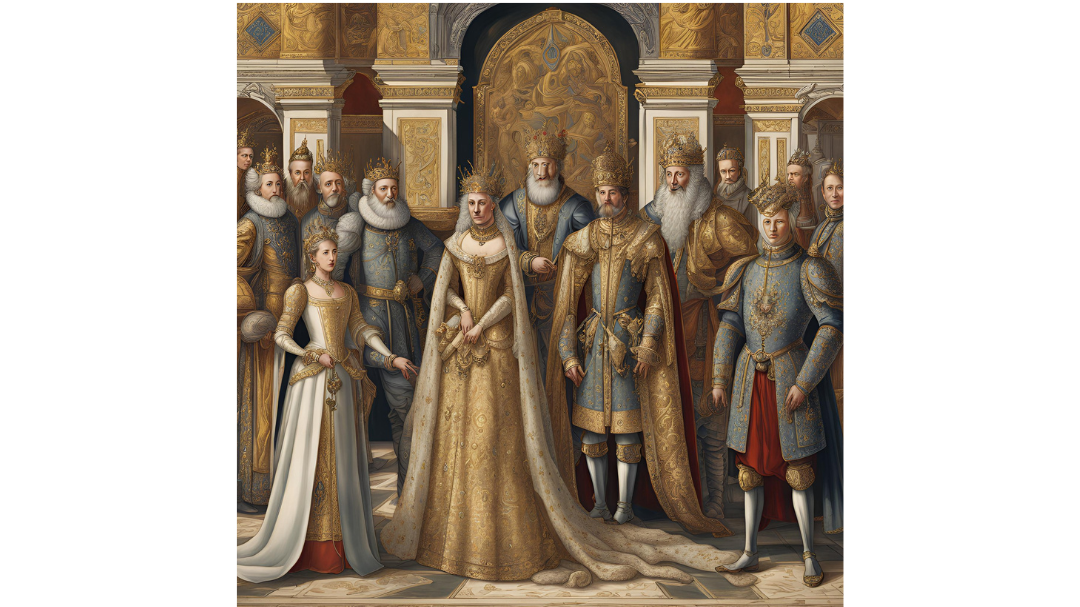The Jagiellon Dynasty – A Glimpse into Eastern European Royal History
The Jagiellon Dynasty was a powerful and influential royal family in Eastern Europe that ruled over Poland, Lithuania, Hungary, and Bohemia from the 14th to the 16th centuries. Originating in Lithuania, this dynasty played a significant role in shaping the political landscape of Eastern and Central Europe during the Middle Ages and Renaissance. Let’s explore the history, achievements, and legacy of the Jagiellon dynasty.
Origins of the Jagiellon Dynasty
The Jagiellon dynasty was founded by Jogaila, the Grand Duke of Lithuania. Lithuania was a vast pagan state in the 14th century, stretching from the Baltic Sea to the Black Sea. In 1386, Jogaila accepted Christianity, was baptized as Władysław, and married Queen Jadwiga of Poland. This marriage united Poland and Lithuania in a personal union and laid the foundation for the Jagiellon dynasty. After this, Jogaila became King Władysław II Jagiełło of Poland, marking the start of a dynasty that would span several generations and shape the region’s future.
The Rise of the Jagiellon Dynasty
The marriage of Jogaila and Jadwiga was more than just a royal alliance; it symbolized a significant political union. The joining of Poland and Lithuania formed one of the largest and most powerful states in Europe at the time. The Jagiellons established a stronghold over the region, bringing together diverse populations and strengthening their territories.
The Jagiellons continued to expand their influence by forming strategic alliances through marriage and diplomacy. This approach helped the dynasty extend its control to Hungary and Bohemia. By the mid-15th century, the Jagiellon dynasty ruled over a large portion of Central Europe, securing a powerful position between the German Holy Roman Empire to the west and the rising Ottoman Empire to the south.
The Key Rulers of the Jagiellon Dynasty
Władysław II Jagiełło (Jogaila): As the founder of the Jagiellon dynasty, Władysław II Jagiełło established the union between Poland and Lithuania. He led Poland in the historic Battle of Grunwald in 1410, where the combined Polish-Lithuanian forces defeated the Teutonic Knights, marking a significant victory in the region.
Casimir IV Jagiellon: Son of Władysław II, Casimir IV strengthened the Polish-Lithuanian alliance and helped make Poland a strong European power. He was also the first Jagiellon to rule over Hungary and Bohemia, which expanded the dynasty’s influence even further.
Sigismund I the Old: Casimir IV’s son, Sigismund I, ruled from 1506 to 1548 and is remembered as a patron of the arts, education, and science. He encouraged the Renaissance in Poland, bringing new ideas and cultural developments to the region.
Sigismund II Augustus: The son of Sigismund I, Sigismund II Augustus played a key role in the formation of the Polish-Lithuanian Commonwealth through the Union of Lublin in 1569. This agreement created a political union between Poland and Lithuania, transforming them into a single state under a unified government and electing monarchy. This marked the peak of Jagiellon power in Eastern Europe.
Major Achievements and Contributions
The Jagiellon dynasty was instrumental in creating a unique political and cultural environment in Eastern Europe. Some of their notable contributions include:
The Union of Krewo: The marriage between Jogaila and Jadwiga in 1386 led to the Union of Krewo, the agreement that united Poland and Lithuania. This union helped strengthen both states militarily and politically, allowing them to resist the expansion of powerful neighbors like the Teutonic Knights and the Mongols.
The Battle of Grunwald: One of the most famous achievements of the Jagiellon dynasty was the Battle of Grunwald in 1410, led by Władysław II Jagiełło. This decisive victory over the Teutonic Knights not only stopped their expansion but also secured the Jagiellon dynasty’s influence in the region.
The Union of Lublin: Signed in 1569, the Union of Lublin created the Polish-Lithuanian Commonwealth, one of the largest and most populous countries in Europe. The Commonwealth had an elective monarchy and a unique system of shared governance between Poland and Lithuania, making it an early example of a constitutional monarchy in Europe.
Cultural Renaissance: Under rulers like Sigismund I and Sigismund II, the Jagiellon dynasty fostered a cultural renaissance. The dynasty welcomed scholars, artists, and scientists from across Europe, bringing the ideas of the Renaissance into Eastern Europe. This period saw the growth of universities, the spread of humanist ideas, and the development of literature, art, and architecture.
Religious Tolerance: The Jagiellon dynasty was known for promoting religious tolerance. The Polish-Lithuanian Commonwealth was home to various religious communities, including Catholics, Orthodox Christians, Jews, and Muslims. The dynasty’s policies allowed these communities to coexist peacefully, making the Commonwealth a relatively tolerant society for its time.
The Decline of the Jagiellon Dynasty
The death of Sigismund II Augustus in 1572 marked the end of the Jagiellon dynasty. As he had no heirs, the Polish-Lithuanian throne became vacant, leading to the beginning of the elective monarchy system. The new system allowed the nobility to elect kings, which ultimately weakened the central authority and led to internal conflicts.
Despite the dynasty’s decline, the legacy of the Jagiellons remained strong. The Polish-Lithuanian Commonwealth continued to exist for over two centuries, although it faced challenges from neighboring powers and internal instability. Eventually, the Commonwealth fell victim to partitions by Russia, Prussia, and Austria in the late 18th century, but the impact of the Jagiellon dynasty on Eastern European culture, politics, and society was undeniable.
Legacy of the Jagiellon Dynasty
The Jagiellon dynasty left a lasting legacy that influenced Eastern Europe long after their rule. Their contributions to the political structure, culture, and religious tolerance of the region set them apart as one of the most influential dynasties in European history. Key elements of their legacy include:
Polish-Lithuanian Commonwealth: The Jagiellon dynasty’s vision of a unified Poland and Lithuania paved the way for the Commonwealth, which became a unique example of a multi-ethnic, multi-religious state in Europe.
Renaissance and Cultural Growth: The Renaissance that flourished under the Jagiellon kings influenced the arts, sciences, and intellectual life of Eastern Europe. Many buildings, works of art, and manuscripts from this era still survive and are celebrated today.
Religious Tolerance: The Jagiellon dynasty’s policy of tolerance influenced the Commonwealth’s multicultural character. This legacy of tolerance allowed different religious and ethnic communities to thrive, making the region a center for diverse cultures and ideas.
Political Impact: The Jagiellons helped create a system of governance that allowed nobles a say in the kingdom’s decisions. This “Golden Liberty” influenced the political landscape, with a system of checks and balances that was progressive for its time. However, it also led to decentralization, which eventually made the Commonwealth vulnerable.
Conclusion
The Jagiellon dynasty remains a fascinating chapter in European history. From their humble beginnings in Lithuania, the Jagiellons built an empire that stretched across much of Eastern Europe. Through strategic marriages, military victories, and visionary policies, they fostered a period of stability, cultural development, and relative religious tolerance. Although the dynasty came to an end in the 16th century, the ideals and structures they established continued to shape Eastern Europe for centuries. Today, the Jagiellons are remembered not only as rulers but as champions of a unique, inclusive, and culturally rich region. Their legacy endures in the history and heritage of Poland, Lithuania, and beyond.


